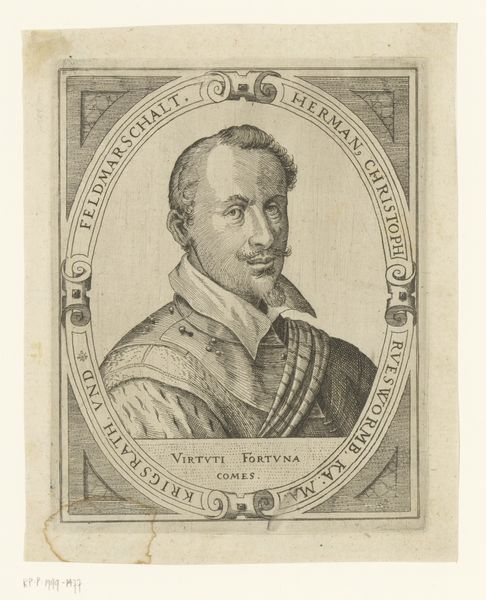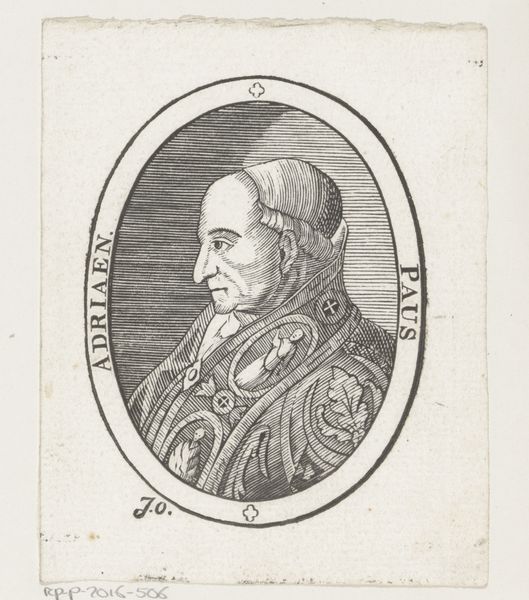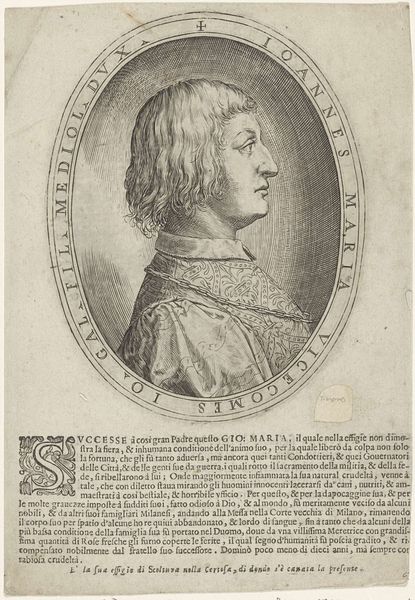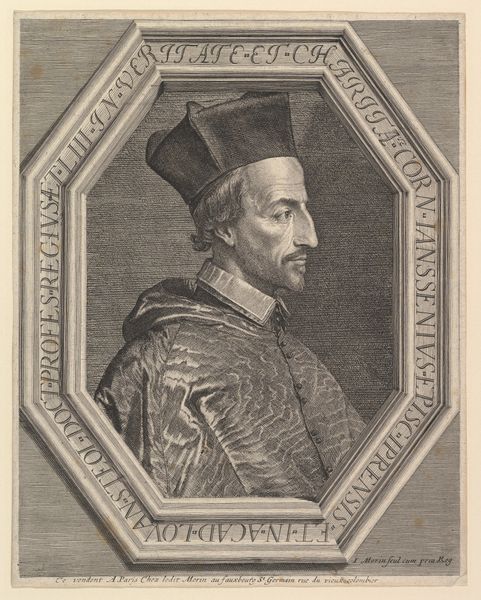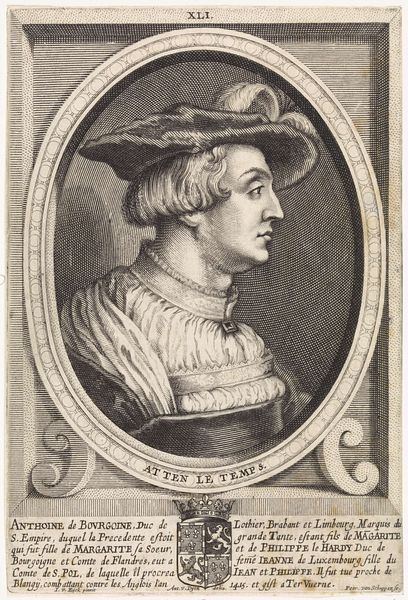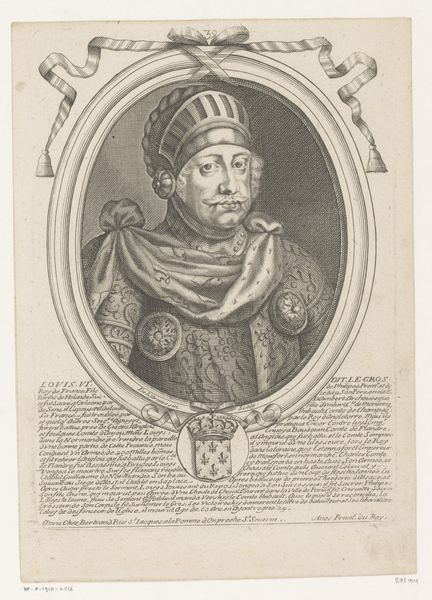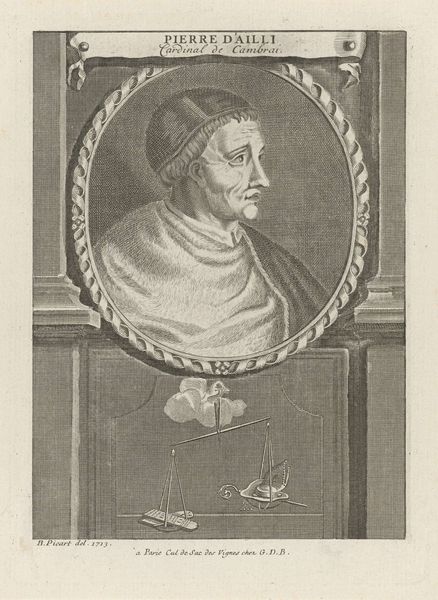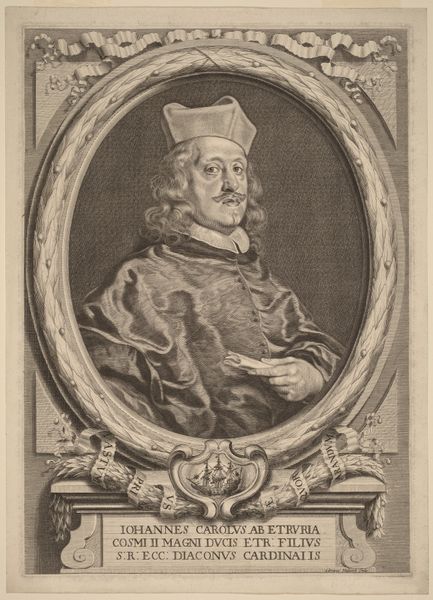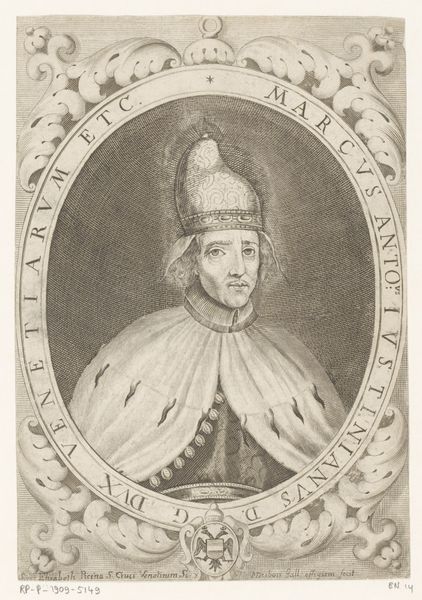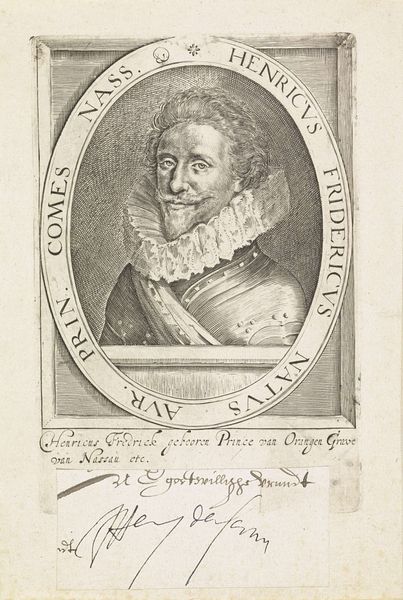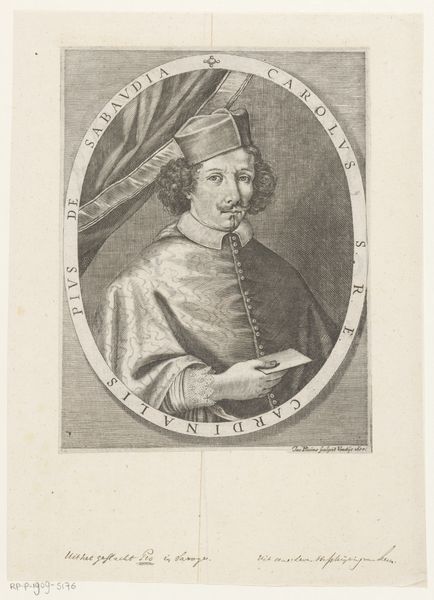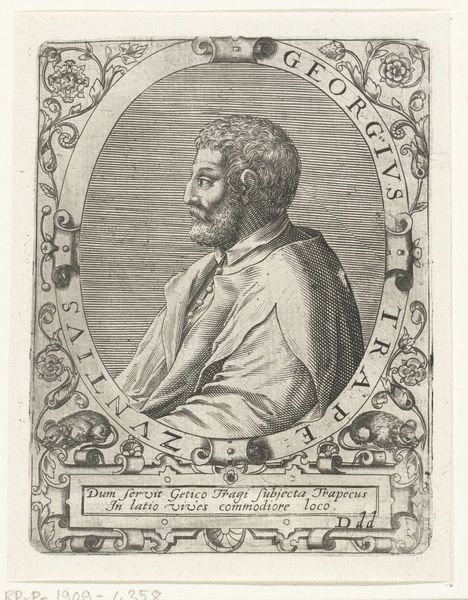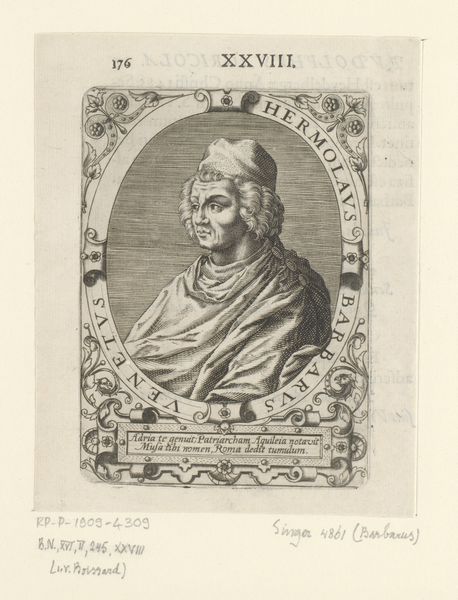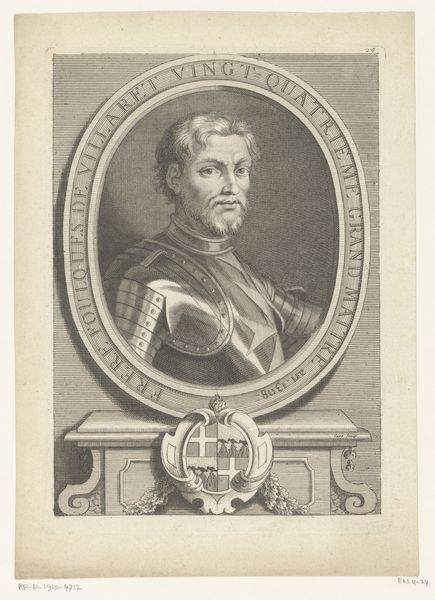
Portrait of Rinaldo Orsino, Archbishop of Florence (1474–1508) 1605 - 1639
0:00
0:00
drawing, print, paper
#
portrait
#
drawing
#
aged paper
#
toned paper
# print
#
charcoal drawing
#
paper
#
coloured pencil
#
italian-renaissance
Dimensions: sheet (circular, diameter measurement): 6 1/2 in. (16.5 cm)
Copyright: Public Domain
Curator: Here we have Bernardino Capitelli's "Portrait of Rinaldo Orsino, Archbishop of Florence (1474–1508)", a drawing created sometime between 1605 and 1639, currently residing at the Metropolitan Museum of Art. Editor: Immediately, I'm struck by the subtle color palette and the almost antiquated air to the work, even considering its age. The tonal variations achieved with what looks like charcoal and colored pencil create a rather unique viewing experience. Curator: Indeed, Capitelli masterfully employs those very media on toned paper, producing a remarkable study in textures and tones. The composition, of course, conforms to typical Renaissance portraiture but its circular frame provides its uniqueness. Editor: From a historical point of view, portraiture was about power and status. This work obviously memorializes Archbishop Orsino, but what I find fascinating is the somewhat humble presentation, especially given his rank. There's an intriguing contradiction at play. Curator: A keen observation! Notice the lines which constitute his face, carefully etched creating both form and expression, consider them in contrast to the relatively flat field of the border surrounding the subject. The artist directs our sight from the periphery toward the central subject by creating these subtle tonal hierarchies. Editor: What intrigues me further is Capitelli's choice to include visual elements that seem specific to Florence – suggesting perhaps a deliberate effort to emphasize Orsino’s role within that society. This piece speaks volumes about how the church and the city were entwined, showcasing this Archbishop's presence and importance to Florentine culture. Curator: A point well taken, how the surrounding ornamentation both signifies Florentine identity but also works to isolate and elevate the subject within that space. It's the delicate dance between inclusion and distinction which I feel encapsulates much of what this portrait attempts to express. Editor: I'm still intrigued by the balance the artist has made in commemorating a religious figure while also embedding the man within the civic life of his time. A potent reminder that history isn't just dates and names, but also artistic intentions frozen in pigment. Curator: I concur completely. Capitelli’s work leaves us with plenty to consider, both from the standpoint of artistic expression, and the dynamics of power, history, and artistic expression in Florence of this period.
Comments
No comments
Be the first to comment and join the conversation on the ultimate creative platform.
